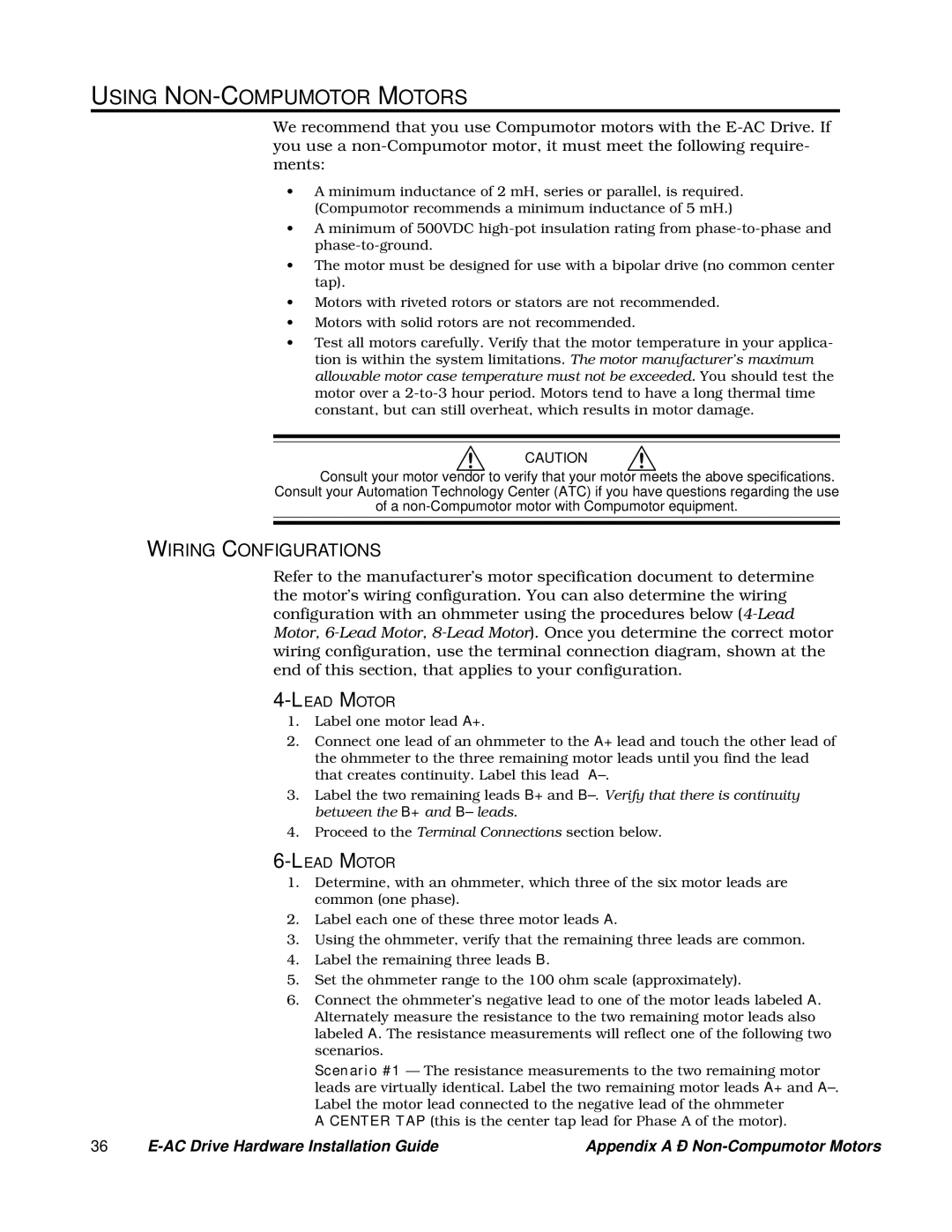
USING NON-COMPUMOTOR MOTORS
We recommend that you use Compumotor motors with the
•A minimum inductance of 2 mH, series or parallel, is required. (Compumotor recommends a minimum inductance of 5 mH.)
•A minimum of 500VDC
•The motor must be designed for use with a bipolar drive (no common center tap).
•Motors with riveted rotors or stators are not recommended.
•Motors with solid rotors are not recommended.
•Test all motors carefully. Verify that the motor temperature in your applica- tion is within the system limitations. The motor manufacturer’s maximum allowable motor case temperature must not be exceeded. You should test the motor over a
CAUTION
Consult your motor vendor to verify that your motor meets the above specifications. Consult your Automation Technology Center (ATC) if you have questions regarding the use
of a
WIRING CONFIGURATIONS
Refer to the manufacturer’s motor specification document to determine the motor’s wiring configuration. You can also determine the wiring configuration with an ohmmeter using the procedures below
4-LEAD MOTOR
1.Label one motor lead A+.
2.Connect one lead of an ohmmeter to the A+ lead and touch the other lead of the ohmmeter to the three remaining motor leads until you find the lead that creates continuity. Label this lead
3.Label the two remaining leads B+ and
4.Proceed to the Terminal Connections section below.
1.Determine, with an ohmmeter, which three of the six motor leads are common (one phase).
2.Label each one of these three motor leads A.
3.Using the ohmmeter, verify that the remaining three leads are common.
4.Label the remaining three leads B.
5.Set the ohmmeter range to the 100 ohm scale (approximately).
6.Connect the ohmmeter’s negative lead to one of the motor leads labeled A. Alternately measure the resistance to the two remaining motor leads also labeled A. The resistance measurements will reflect one of the following two scenarios.
Scenario #1 — The resistance measurements to the two remaining motor leads are virtually identical. Label the two remaining motor leads A+ and
A CENTER TAP (this is the center tap lead for Phase A of the motor).
36 | Appendix A – |
